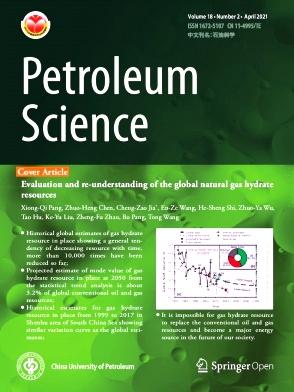Ethoxylated molybdenum disulphide based nanofluid for enhanced oil recovery
IF 6
1区 工程技术
Q2 ENERGY & FUELS
引用次数: 0
Abstract
Despite advances in renewable energy sources, the world's current infrastructure and consumption patterns still heavily depend on crude oil. Enhanced oil recovery (EOR) is a crucial method for significantly increasing the amount of crude oil extracted from mature and declining oil fields. Nanomaterials have shown great potential in improving EOR methods due to their unique properties, such as high surface area, tunable surface chemistry, and the ability to interact at the molecular level with fluids and rock surfaces. This study examines the potential use of incorporating ethoxylated molybdenum disulfide with a unique three-dimensional flower-like morphology for overcoming the challenges associated with oil recovery from reservoirs characterized by complex pore structures and low permeability. The synthesized nanomaterial features a chemical composition that encompasses a polar ethoxy group linking molybdenum disulfide nanosheets and an alkylamine chain. The ethoxy group promotes interactions with water molecules through hydrogen bonding and electrostatic forces, disrupting the cohesive forces among water molecules and reduction surface tension at the oil–water interface. As a result, the nanomaterial achieves an ultra-low interfacial tension of 10−3 mN/m. Core flooding experiments demonstrate a significant oil recovery of approximately 70% at a concentration as low as 50 ppm. This research paves the way for the design and synthesis of advanced extended surfactant-like nanomaterials, offering a promising avenue for enhancing oil recovery efficiency.
基于二硫化钼的乙氧基化纳米流体用于提高石油采收率
尽管可再生能源取得了进步,但世界目前的基础设施和消费模式仍然严重依赖原油。提高石油采收率(EOR)是大幅增加成熟油田和衰退油田原油开采量的重要方法。纳米材料因其独特的性能,如高比表面积、可调的表面化学性质以及与流体和岩石表面在分子水平上相互作用的能力,在改进 EOR 方法方面显示出巨大的潜力。本研究探讨了加入具有独特三维花状形态的乙氧基化二硫化钼的潜在用途,以克服从具有复杂孔隙结构和低渗透性特征的储层中采油所面临的挑战。合成的纳米材料的化学成分包括连接二硫化钼纳米片和烷基胺链的极性乙氧基。乙氧基通过氢键和静电力促进了与水分子的相互作用,破坏了水分子之间的内聚力,降低了油水界面的表面张力。因此,这种纳米材料实现了 10 mN/m 的超低界面张力。岩心浸润实验表明,当浓度低至 50 ppm 时,石油采收率可达到约 70%。这项研究为设计和合成先进的扩展表面活性剂类纳米材料铺平了道路,为提高采油效率提供了一条前景广阔的途径。
本文章由计算机程序翻译,如有差异,请以英文原文为准。
求助全文
约1分钟内获得全文
求助全文
来源期刊

Petroleum Science
地学-地球化学与地球物理
CiteScore
7.70
自引率
16.10%
发文量
311
审稿时长
63 days
期刊介绍:
Petroleum Science is the only English journal in China on petroleum science and technology that is intended for professionals engaged in petroleum science research and technical applications all over the world, as well as the managerial personnel of oil companies. It covers petroleum geology, petroleum geophysics, petroleum engineering, petrochemistry & chemical engineering, petroleum mechanics, and economic management. It aims to introduce the latest results in oil industry research in China, promote cooperation in petroleum science research between China and the rest of the world, and build a bridge for scientific communication between China and the world.
 求助内容:
求助内容: 应助结果提醒方式:
应助结果提醒方式:


